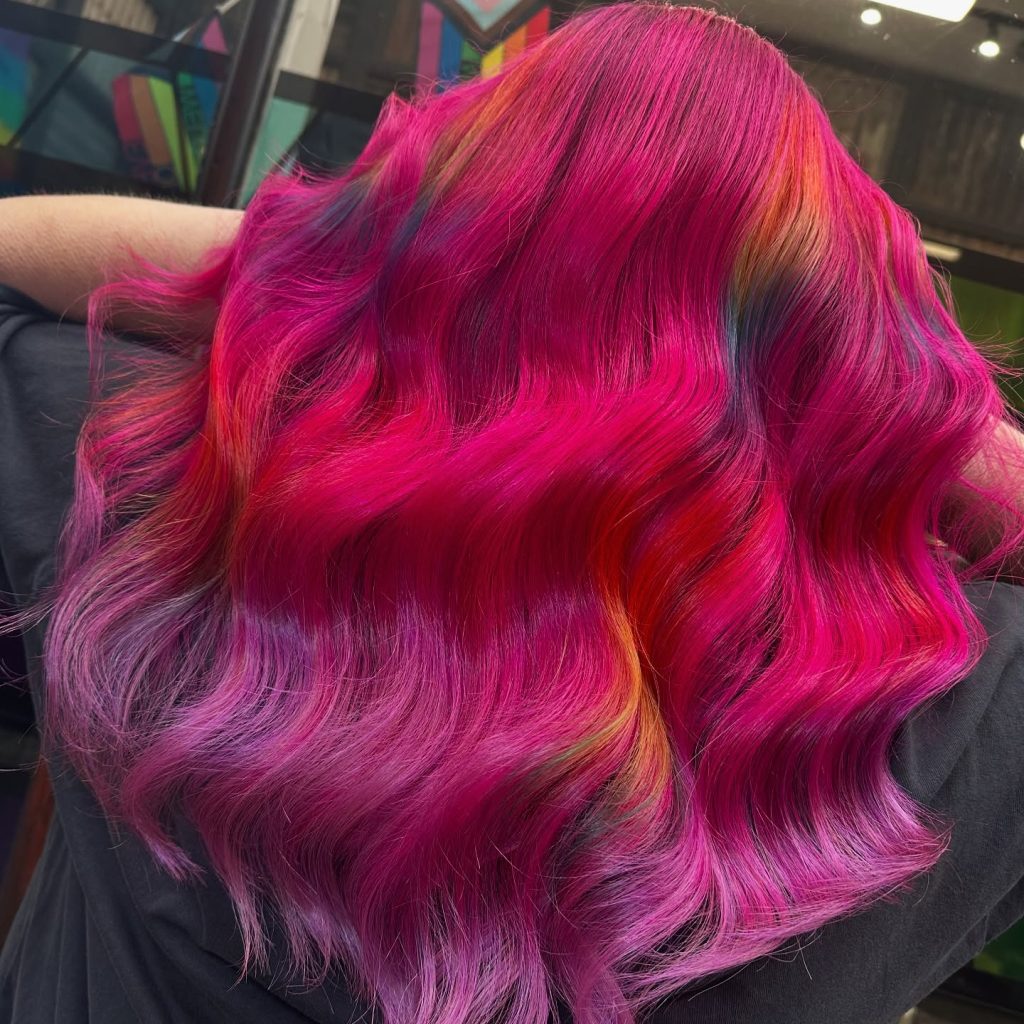In the world of vivid hair colour, it’s not just about technique, we all know it’s about connection. When clients come in asking for a bold new look or colour transformation, there’s usually a deeper reason behind the choice. As a professional colourist, understanding the psychology of colour can give you a powerful edge, helping you guide your clients to shades that not only suit them visually but also emotionally depending on how they are feeling and what vibe they want to be giving!
Let’s explore how colour psychology can help you deliver more meaningful consultations, build trust and create results your clients feel seen in.

Why Colour Psychology Matters in Hairdressing
Every colour evokes a feeling. Red is powerful. Blue is calming. Yellow lifts the mood. And when a client chooses a vivid shade, they’re always expressing something about who they are or who they want to become. That’s why we love semi-permanent vivid colour and how versatile it is – anyone can change their outlook, their mood and their outward persona as often as they want.
Understanding their emotional cues allows you to:
- Ask better consultation questions;
- Make personalised shade recommendations;
- Create an experience that feels thoughtful and intentional;
- Support them in their colour journey;
- Encourage longer-term client loyalty.
With Crazy Color’s wide range of bold, semi-permanent shades, you’ve got the perfect palette to turn their self-expression into reality.
A Quick Guide to Colour Meanings
Here’s a brief rundown of what some popular vivid colours often symbolise:
- Pink – Playful, creative, romantic, youthful
- Purple – Mysterious, spiritual, artistic, individualistic
- Blue – Calm, trustworthy, thoughtful
- Green – Rebellious, grounded, eco-conscious, edgy
- Red – Passionate, energetic, confident, dramatic
- Orange – Social, warm, spontaneous, optimistic
- Yellow – Cheerful, sunny, adventurous, bold
- Silver/Grey – Chic, independent, cool
Of course, personal associations vary – that’s where a skilled consultation comes in.

What to Ask During a Vivid Colour Consultation
Rather than diving straight into colour charts, start with a few open-ended questions that reveal your client’s motivations:
- “What inspired you to go for a bright colour?”
- “Is this a big change or something you’ve done before?”
- “Do you want something that makes a statement or feels more low-key?”
- “Are you drawn to a certain mood or feeling with your colour?”
Use these insights to suggest shades that reflect their goals, mood, or personality – not just what looks good against their skin tone. You also want to ask them how much time and effort they are willing to put into their aftercare, as we all know those who love low maintenance should avoid the colours that take the most looking after.
Matching Mood to the Crazy Color Palette
Let’s say a client is looking for something empowering but elegant. You might steer them towards Crazy Color Burgundy or Hot Purple. If they want to feel more playful and light-hearted, Candy Floss, Peachy Coral or Bubblegum Blue could be perfect.
You’re not just giving them colour – you’re giving them identity.
Pro Tips for Bringing It All Together
- Mood boards work wonders – Ask your clients to come to you with colour inspiration and some saved inspo images to help guide the conversation.
- Offer a two-step plan – Sometimes a dramatic change feels intimidating. Suggest a transitional shade before going full-intensity.
- Keep aftercare emotional too – Remind clients that their colour is an expression – and keeping it fresh with Crazy Color shampoo, conditioner and top up masks is part of maintaining that identity.
Final Thoughts: It’s More Than Just Colour
When you combine your technical skill with an understanding of colour psychology, you create a more personalised and memorable service. It’s not just about what suits them – it’s about what speaks to them.
So next time a client says, “I want to go bold,” ask yourself: what are they really trying to say?
With Crazy Color, you’ve got the tools to help them say it loud and clear.
